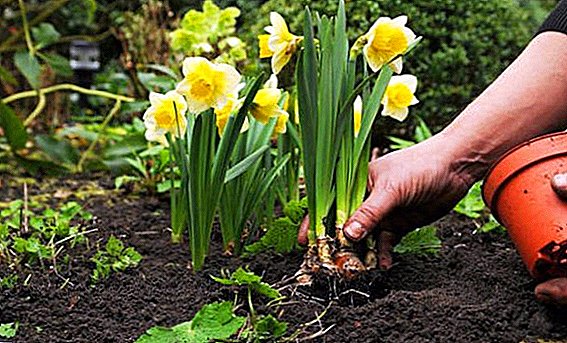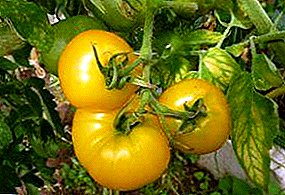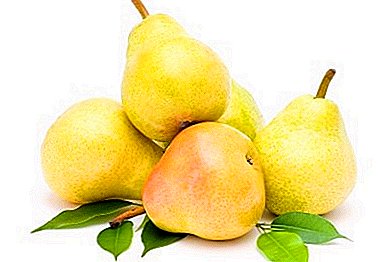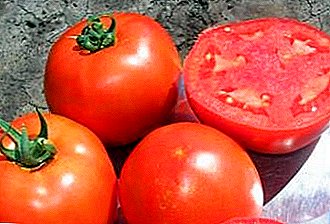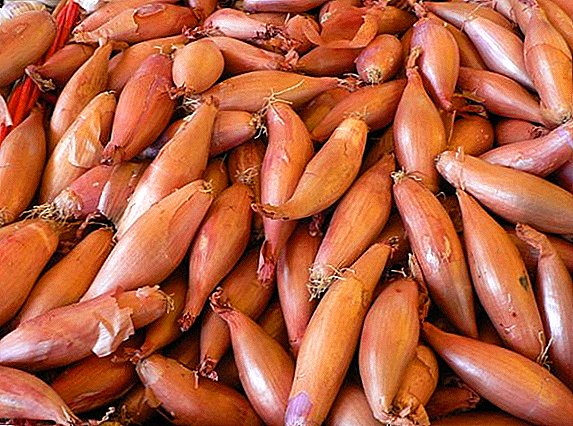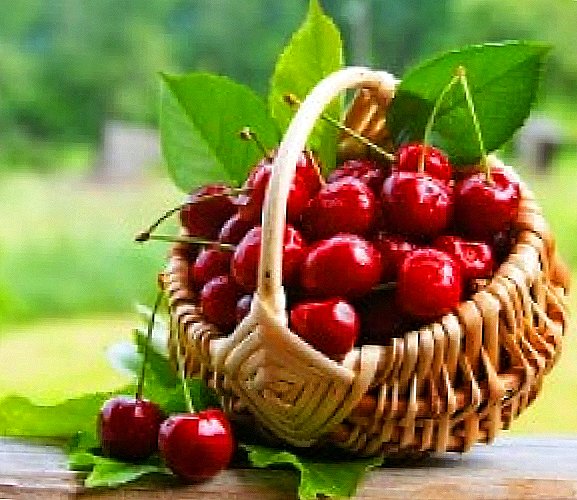
Tomato variety "Bezrassadny" was developed specifically for industrial sowing of agricultural areas.
After successful completion of field trials, the variety is recommended for cultivation on an industrial scale and in areas of amateur gardeners.
This article provides a full description of the variety, describes its characteristics and cultivation features.
Description varieties of tomato "Bezrassadny"
| Grade name | Seedless |
| general description | Early ripe determinant variety of tomatoes for cultivation in greenhouses and open ground |
| Originator | Russia |
| Ripening | 100-110 days |
| The form | Rounded |
| Colour | Red |
| Average tomato mass | 100-110 grams |
| Application | Universal |
| Yield varieties | 8 kg per square meter |
| Features of growing | Grown without seedlings |
| Disease resistance | Needs to prevent late blight |

- Tomato Bezrassadny is a determinant variety. Not a hybrid. Seeds varieties suitable for collection and subsequent use.
- The leaf is average, the bush has little branch. Bush height up to 40 cm.
- It refers to early varieties, the ripening period of the fruit is 100-110 days after germination.
- It is grown up in an open ground, light film shelters, in hotbeds.
- The first inflorescence is laid over 6-7 leaf. In a brush 6-8 fruits are formed.
- Tomatoes bezrassadny pronounced even red color, without spot at the stem. Round shape. Meaty. Fruit weight 100-110 gr.
- Well dispensed, easy to transport.
- The quality is high.
- Universal table variety, good taste, used for preservation, salting. The taste is sweet, with a pronounced tomato flavor.
- Productivity is high.
The grade "Bezrassadny" is created on the basis of frost-resistant and ground tomatoes of the Soviet breeder Pavel Saraev. Zoned in the southern and central regions of Russia, in Moldova and Ukraine. Suitable for areas of high risk farming.
Vegetable growers amateurs get good harvests of a seedless variety in Komi, Karelia, Pomorie, in the north-western regions of Russia, Siberia, and the Urals.
The yield of other varieties is as follows:
| Grade name | Yield |
| Seedless | 8 kg per square meter |
| Apparently invisible | 12-15 kg per square meter |
| American ribbed | 5.5 kg from a bush |
| Apples in the snow | 2.5 kg from a bush |
| King of the Market | 10-12 kg per square meter |
| Early love | 2 kg from a bush |
| The president | 7-9 kg per square meter |
| Samara | 11-13 kg per square meter |
| Nastya | 10-12 kg per square meter |
| The baron | 6-8 kg from a bush |
| Apple Russia | 3-5 kg from a bush |
Advantages and disadvantages
The advantages of the variety include:
- Seedless cultivation, low production costs.
- Powerful root system, environmental plasticity.
- Increased resistance to diseases: phytophthora, top and root rot.
- Drought and frost resistance, abundant fruiting, high commercial quality.
Among the shortcomings can be noted:
- More lately than in planted seedlings of tomatoes, ripening.
- Duration of fruiting is reduced by 25-30 days.
 Read also on our website: Why do gardeners need fungicides, insecticides, growth stimulants? How to grow early varieties?
Read also on our website: Why do gardeners need fungicides, insecticides, growth stimulants? How to grow early varieties?How to get a decent crop of tomatoes in the open field? What varieties are distinguished not only by good immunity, but also by high yields?
The weight of fruits in tomatoes of other varieties, see below:
| Grade name | Fruit weight |
| Seedless | 100-110 grams |
| Cranberries in sugar | 15 grams |
| Crimson Viscount | 450 grams |
| The Tsar Bell | up to 800 grams |
| Red Guard | 230 grams |
| Golden heart | 100-200 grams |
| Irina | 120 grams |
| Shuttle | 50-60 grams |
| Olya la | 150-180 grams |
| Lady shedi | 120-210 grams |
| Honey heart | 120-140 grams |
| Andromeda | 70-300 grams |
A photo


Features agrotehnika
For disinfection, seeds are soaked in 1% potassium permanganate solution for 15-20 minutes. Then dried to flowability. Before planting, it is worth treating the seeds with a growth stimulator, for example, Appin, Fitosporin, Zircon.
Vegetable growers use an aqueous solution of aloe or honey juice as natural stimulants. After stimulation, seed is left for two days to swell.
At the end of April, seed beds with a width of about 1.2-1.5 m are prepared. When digging, humus (rotten compost) is introduced - a bucket of 2 m², a small amount of ash. Two grooves with a depth of 10-12 cm are made or holes are made with a diameter of 20 cm.
Spill a weak solution of manganese, compacted soil. For a better warming up of the ground, the beds are covered with a film for a week.
When establishing a stable warm weather, seeds of tomatoes are placed in the ground. It is preferable to use areas after zucchini, cucumbers, carrots, cauliflower, dill, parsley. Mulch sand or peat. Do not water. Cover again. Waiting for the emergence of sprouts 7-10 days.
 Read all about what constitutes a soil for tomatoes: for seedlings and adult plants in the greenhouse.
Read all about what constitutes a soil for tomatoes: for seedlings and adult plants in the greenhouse.And also, how to prepare a soil mixture independently and what types of soil for tomatoes exist?
When the seedlings reach the height of the shelter level, the film is fixed on the frames, arcs. In between rows, to protect against possible frosts, lay out plastic bottles of water.
When the average daily temperature is set at 20 °, then the film is removed for the day. When the threat of returning sub-zero temperatures passes, the shelter is completely removed. After the appearance of 3-4 this leaf is thinned, leaving up to 10 plants per 1 m².
Tip! For the formation of numerous ovaries, foliar spraying can be performed with an aqueous solution of boric acid.
Tomato Bezrassadnyy does not experience the stress of transplantation, picks. It forms a root system that goes deep into the soil, thereby extracting more moisture than traditional seedlings. Watering rare. Once for 7-10 days, with warm water. The variety is responsive to drip irrigation.
Tomatoes are fed with complex fertilizers twice a season. In the spring nitrogen fertilizers are applied. For autumn tillage, for subsequent planting - potash-phosphorus mixture.
Tomatoes require regular weeding. Loosening after rains, watering, the formation of surface crusts on the ground. Mulching. Hilling. The grade does not require a garter and pasynkovaniya.
Tip! When autumn cold comes, protect with covering material. Fruiting time will increase.
Read more about all fertilizers for tomatoes.:
- Yeast, iodine, hydrogen peroxide, ammonia, boric acid, ash.
- Organic, mineral, ready.
- For seedlings, when picking, foliar.
- TOP best.
Diseases and pests
For the prevention of late blight, dry and white spot treated with a solution of acrobat or Bordeaux liquids.
Read also about such diseases of tomatoes in greenhouses as alternarioz, fusarium and verticelz, about measures to combat them. And also how to protect plants from phytophthora and varieties that do not suffer from this disease.
With the appearance of the Colorado potato beetle, on small areas of landing, they collect the larvae and adults manually or use other methods of control. In industrial cultivation using insecticides. Also, tomatoes can be damaged by aphids, thrips, spider mites. How to get rid of these pests, read the articles of special sections of our site: the fight against spider mites, how to get rid of aphids and thrips.
The lack of costs for growing seedlings, good survival rate at an early stage of development - these advantages of the Bezrassadny tomato variety make it as convenient as possible for cultivation in farms and gardeners.
And in the table below you will find links to articles about tomatoes of the most different ripening terms that may be useful to you:
| Superearly | Mid-season | Medium early |
| White filling | Black moor | Hlynovsky F1 |
| Moscow stars | Tsar Peter | One hundred poods |
| Room surprise | Alpatieva 905 a | Orange Giant |
| Aurora F1 | F1 favorite | Sugar Giant |
| F1 Severenok | A La Fa F1 | Rosalisa F1 |
| Katyusha | Right size | Um Champion |
| Labrador | Dimensionless | F1 Sultan |


